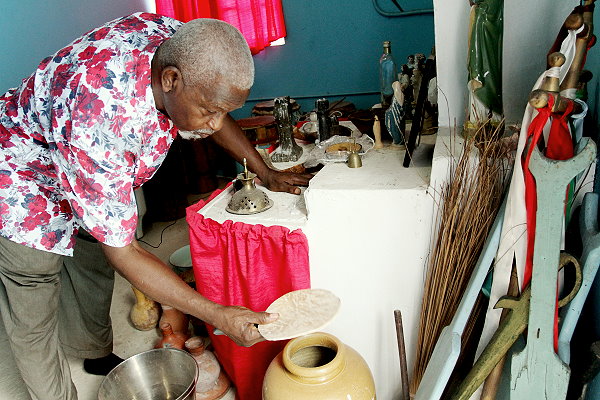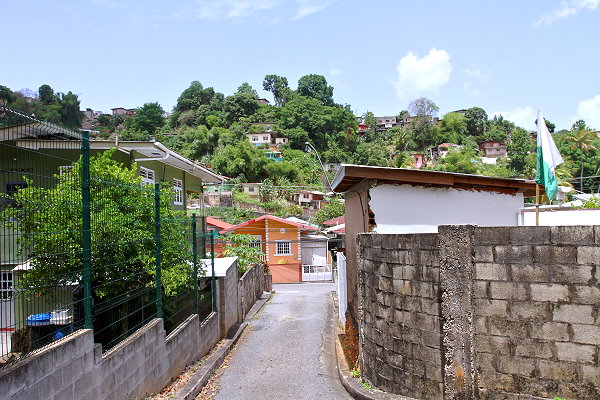

The Rada Compound, also known as Dangbwe Comme, is located at the Corner of Antoine Lane in Belmont Valley Road. Here devotees practice the religion of vodun in a syncretic form like what obtains in Haiti. Dangbwe Comme was established over 150 years ago by its founder Abojevi Zahwenu who adopted the name Robert Antoine. Zahwenu, also known as Papa Nanee, was born in the kingdom of Dahomey around 1800. He had served in the Dahomean army but ended up on a ship bound for the Americas due to military defeat. Zahwenu was rescued from Portuguese slavers by the British in the mid-1850s and was taken to Trinidad where he would live out the rest of his days. Shortly after his arrival in Trinidad, Zahwenu worked on an estate near Champs Fleurs and took up residence in Belmont Valley Road.
Zahwenu established a Rada compound in 1868 in honour of the Fon entity, Dangbwe. The other Rada compound in the area (which no longer exists) was primarily devoted to the veneration of Sakpata. Although Zahwenu was not a hubono or member of the priestly caste, he was a bokono or diviner and carried with him the history of his people. He was thus able to recreate the practice of vodun in Trinidad with great accuracy.
Inside the original Dangbwe Comme was Zahwenu’s residence, a vodunkwe (chapel), two outdoor shrines, and a shed where religious dancing and worship occurred. Today, there is also a Convent, established in the 1950s, where dancers would ‘come to’ after spiritual manifestation. There is also a private cemetery, separated from the buildings on the compound by a narrow roadway, where Zahwenu and his descendants are buried. Dangbwe Comme still possesses these structures although most of the buildings are not original.
African spirituality in Trinidad, even after Emancipation, is still much maligned in Trinidad and Tobago and the religion of vodun is no exception. In 1886, Papa Nanee was convicted by a local court for practicing obeah or conjuring spiritual forces for the purpose of making money. Antoine appealed and won arguing that he was merely performing the ceremonial duties of a religious leader, similar to a Christian priest. Today, people still shudder at the mere mention of words such as obeah, voodoo/vodun, or any other term related to African spirituality. Despite this ignorance, the religion has survived, and without being subsumed by other numerically dominant African traditions in the area. The Dangbwe Comme remains a symbol of the tenacity of the Rada community and its commitment to maintaining its ethnic identity in Trinidad and Tobago.
Address: Belmont Valley Road
Town/City: Port of Spain
Region: Port of Spain
Site Type: Cultural Heritage
Ownership: Private
Public Accessibility: Restricted Access
Cultural Community: African
Site Features: Residences & Great Houses, Places of Worship, Tombs & Burial Grounds

Photo by Leslie-Ann Paul – Henry Antoine demonstrates “The beating of the Jar”.

Photo by Leslie Ann Paul – An alter with a mix of African deities and Roman Catholic saints within the vodunkwe.

Photo by Leslie Ann Paul – A view of the narrow road leading to the Rada compound seen on the right
Belmont Valley Road, Port of Spain

